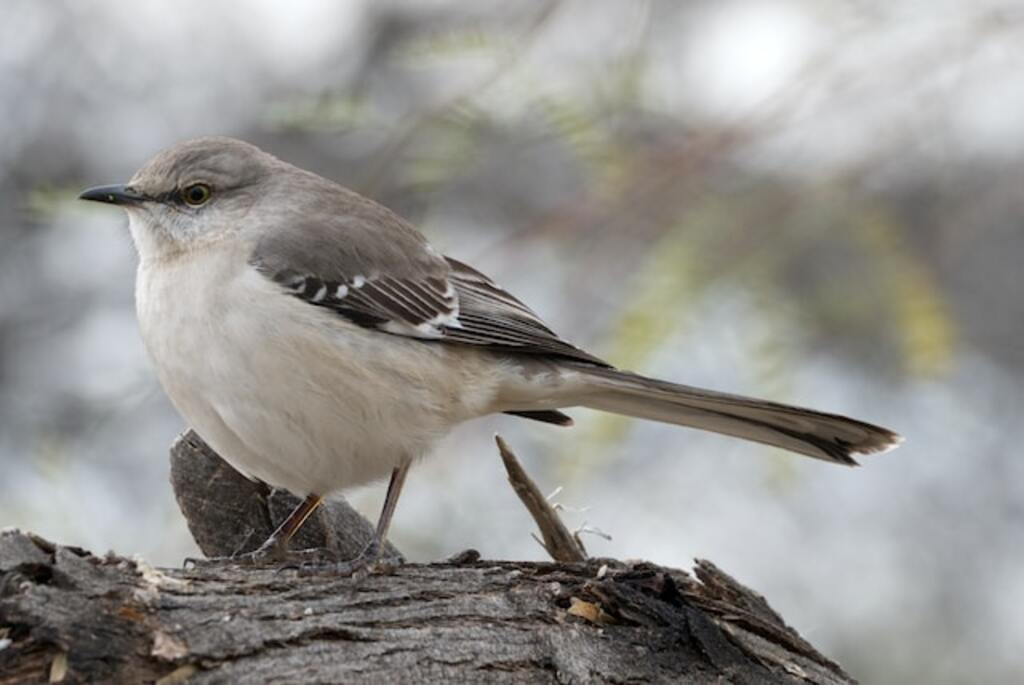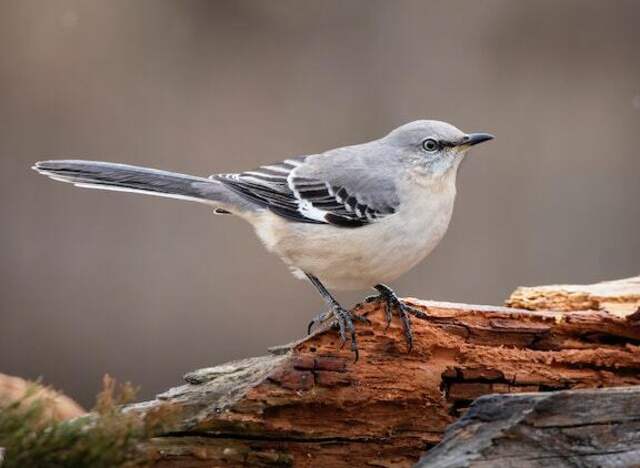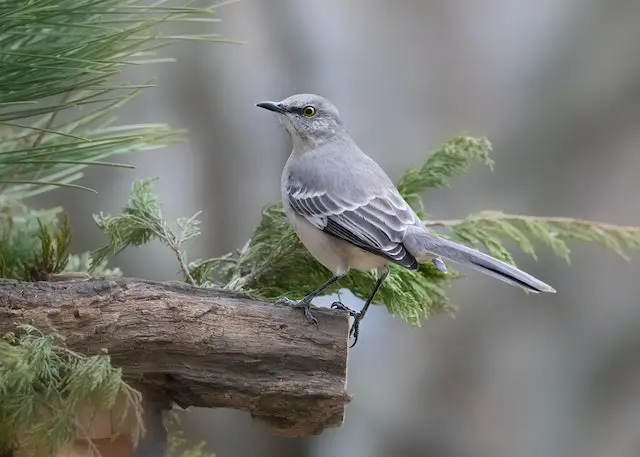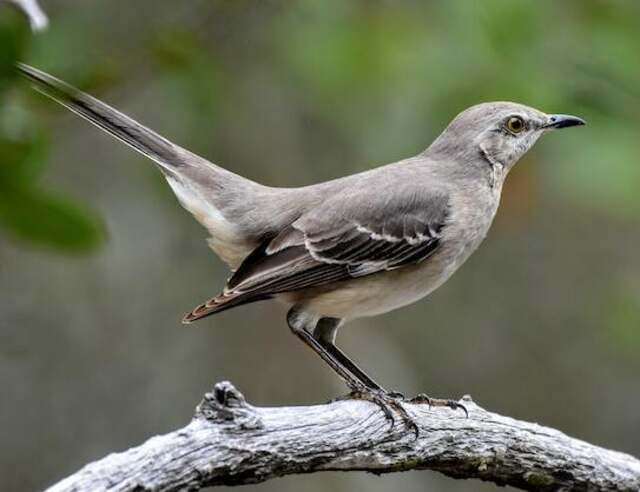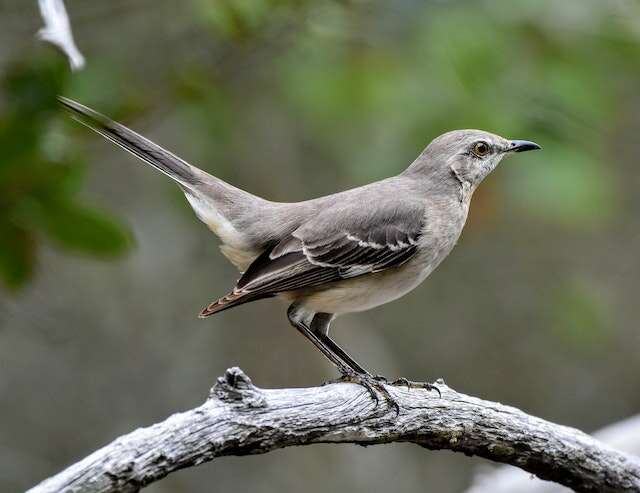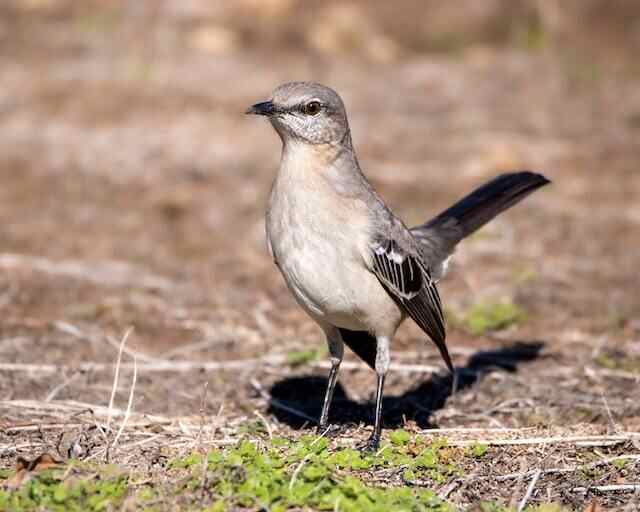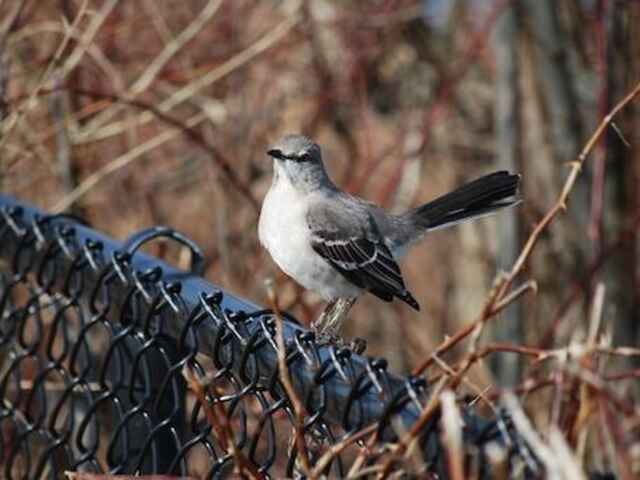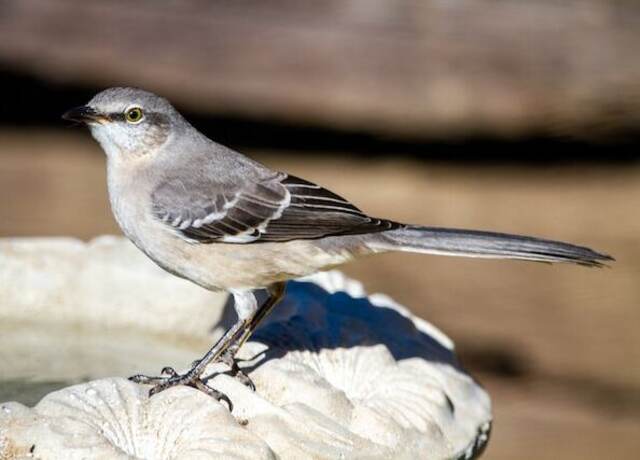Welcome to our exploration of the Tennessee state bird, the remarkable Northern Mockingbird! As a cherished emblem of the state, this bird embodies the spirit and natural beauty of Tennessee’s landscapes.
Renowned for its melodious songs, intricate plumage, and vibrant personality, the Northern Mockingbird captivates bird enthusiasts and symbolizes the rich biodiversity of the region.
Join us on a journey to uncover the fascinating characteristics, cultural significance, and ecological importance of this beloved avian icon in the heart of Tennessee.
Table of Contents
- 1 History of the Tennessee State Bird: Northern Mockingbird
- 2 Overview of the Tennessee State Bird
- 3 Symbolic Representation of the Tennessee State Bird
- 4 Appearance and Behavior of the Tennessee State Bird: The Northern Mockingbird
- 5 Feeding Habits and Diet of the Tennessee State Bird
- 6 Interesting Facts About the Tennessee State Bird
- 6.1 Captivity survival
- 6.2 Singing ability
- 6.3 Monogamy
- 6.4 Population status
- 6.5 Flight abilities
- 6.6 Intelligence
- 6.7 Entertainment inspiration
- 6.8 Presence as a native species
- 6.9 Threats from illegal trade
- 6.10 Unique white blotches
- 6.11 Behavioral development
- 6.12 Scientific research and studies
- 6.13 Citizen science and monitoring
- 6.14 Conservation and management strategies
- 6.15 Public education and outreach
- 7 Conservation Status and Threats to the Tennessee State Bird
- 8 How to Attract and Care for Northern Mockingbirds in Tennessee
- 9 Frequently Asked Questions (FAQs)
- 9.1 What is the difference between a Northern Mockingbird and a mockingbird?
- 9.2 Can Northern Mockingbirds imitate sounds other than birdsong?
- 9.3 Do Northern Mockingbirds migrate, or do they stay in Tennessee year-round?
- 9.4 Are Northern Mockingbirds protected by law, and can they be kept as pets?
- 9.5 How can I tell if a Northern Mockingbird is male or female?
- 10 Conclusion
- 11 Author
History of the Tennessee State Bird: Northern Mockingbird
Origin of the Selection of the State Bird
In 1933, the Tennessee Ornithological Society launched a state-wide campaign to educate the people of Tennessee about the adoption of an official state bird. The purpose of the vote was to determine the preference of the people of Tennessee.
Over 70,000 individuals cast their votes, with the mockingbird receiving 15,553 votes and the robin receiving 15,073 votes, making the mockingbird the winner by a small margin.
The cardinal received 13,969 votes, the bobwhite received 10,460 votes, and the bluebird received 9,125 votes, with other birds receiving 8,751 votes.
Key Individuals Involved in the Selection Process
➡️ On April 19, 1933, the mockingbird was adopted as the official state bird of Tennessee through Senate Joint Resolution No. 51.
The resolution acknowledged that 45 of the 48 states in the US had already chosen an official state bird and that the Tennessee Ornithological Society, along with various organizations such as the Garden Clubs, Parent Teacher Associations, and state departments, had conducted a state-wide campaign of education to determine the people’s preferences for a state bird.
The resolution declared that the mockingbird received the most votes and was therefore chosen as the official state bird.
Unlike other states that recorded their state bird in their state code, the Tennessee state bird was adopted through a Senate Joint Resolution and is not recorded in the Tennessee Code.
| Key Individuals Involved | Role |
|---|---|
| Tennessee Ornithological Society | Conducted the state-wide campaign of education to determine the people’s preferences for a state bird |
| Garden Clubs | Participated in the campaign of education to determine the people’s preferences for a state bird |
| Parent Teacher Associations | Participated in the campaign of education to determine the people’s preferences for a state bird |
| State departments | Participated in the campaign of education to determine the people’s preferences for a state bird |
| Tennessee Senate | Adopted the mockingbird as the official state bird of Tennessee through Senate Joint Resolution No. 51 |
Other State Bird Contenders
Before the Northern Mockingbird was chosen as the state bird for Tennessee, there were several other birds that were considered for the honor. Some of these birds included the Robin, Wild Turkey, the Wood Duck, and the Bobwhite Quail.
However, none of these birds had the same qualities as the Northern Mockingbird, which made it the clear choice for the state bird of Tennessee.
Table of State Bird Contenders
Here is a table showing some of the other birds that were considered for the position of state bird in Tennessee:
| Bird Species | Number of Votes |
|---|---|
| Northern Mockingbird | 15,553 |
| American Robin | 15,073 |
| Northern Cardinal | 13,969 |
| Northern Bobwhite | 10,460 |
| Eastern Bluebird | 9,125 |
| Other Birds | 8,751 |
Over 70,000 individuals cast their votes to determine the official state bird of Tennessee, with the Northern Mockingbird receiving the most votes, followed closely by the American Robin.
The Northern Cardinal, Northern Bobwhite, and Eastern Bluebird also received significant numbers of votes, with other bird species receiving a total of 8,751 votes.
Overview of the Tennessee State Bird
Description of the Northern Mockingbird
The Northern Mockingbird is a medium-sized bird that measures about 10 inches in length and has a wingspan of about 14 inches. It has a grayish-brown body with white patches on its wings and tail feathers. The bird’s wings also have two white wing bars. Males and females look alike, and juveniles have a speckled appearance. The long tail of the bird is frequently held in a cocked position.
Habitat and Range
The Northern Mockingbird is a common bird species that is found throughout Tennessee. It is also found in other southeastern states, including Mississippi, Florida, Arkansas, and Texas. The bird prefers open habitats such as grasslands, suburban areas, and parks. It is also found in forest edges and along roadsides.
Migration Patterns and Behavior
The Northern Mockingbird is a year-round resident in Tennessee and does not migrate. During the breeding season, which is from March to August, the bird is territorial and will defend its nesting area from intruders. The bird is known for its aggressive behavior and will swoop and dive at anything that gets close to its nest, including people.
Ecological Role in Tennessee Ecosystems
The Northern Mockingbird is an important species in Tennessee ecosystems. It helps to control insect populations, including beetles, grasshoppers, and caterpillars. The bird also helps to disperse seeds of fruit-bearing plants, including blackberries, blueberries, and strawberries.
Behavior and Vocalizations
The Northern Mockingbird is known for its vocal abilities and can sing up to 200 songs, including the songs of other birds. The bird’s vocalizations are complex and varied and can include imitations of other bird species, as well as sounds from other animals, including frogs and insects.
Feeding Habits
The Northern Mockingbird is an omnivore and feeds on a variety of foods, including insects, fruits, and seeds. During the winter months, the bird will eat fruits from trees and shrubs, including holly, cedar, and dogwood. The bird also feeds on insects, including grasshoppers, beetles, and caterpillars.
| Bird Species | Habitat | Feeding Habits | Behavior and Vocalizations |
|---|---|---|---|
| Northern Mockingbird | Open habitats, grasslands, suburban areas, parks, forest edges, roadsides | Insects, fruits, seeds | Complex and varied vocalizations, imitations of other bird species and other animals |
| Eastern Bluebird | Open woodlands, rural areas, parks, gardens, orchards | Insects, fruits, berries | Pleasant warbling song, often sings from a perch |
| Wood Thrush | Deciduous forests, forest edges, parks | Insects, fruits, berries, snails | Clear, flute-like song, often sings at dawn and dusk |
Symbolic Representation of the Tennessee State Bird
The Northern Mockingbird is the state bird of Tennessee and holds a special place in the hearts of locals. Here is a look at its symbolic representation.
Cultural significance of the bird in Tennessee
The Northern Mockingbird is the state bird of Tennessee and holds a special place in the hearts of the people. It is a common sight in the state and is known for its beautiful song. The bird has been featured in many works of art, literature, and music, making it an important cultural symbol in the state.
Folklore and mythology surrounding the Northern Mockingbird in Tennessee
In Tennessee, the Northern Mockingbird is associated with good luck and is believed to bring happiness and prosperity to those who hear its song. According to folklore, if a mockingbird builds its nest in your yard, it is a sign of good luck and fortune.
Economic and recreational significance
The Northern Mockingbird is an important bird for birdwatchers and nature enthusiasts in Tennessee. It is also a popular bird for hunting, with many hunters seeking it out for sport.
Bird’s role in Tennessee’s identity and values
The Northern Mockingbird is a symbol of resilience and strength in Tennessee. It is known for its ability to adapt to different environments and its beautiful song, which represents the state’s love of music and the arts. The bird’s territorial nature also represents the state’s strong sense of community and loyalty.
| Aspect | Description |
|---|---|
| Cultural significance | The Northern Mockingbird is an important cultural symbol in Tennessee, featured in many works of art, literature, and music. |
| Folklore and mythology | The bird is associated with good luck and is believed to bring happiness and prosperity to those who hear its song. |
| Economic and recreational significance | The bird is popular among birdwatchers and hunters in Tennessee. |
| Values and identity | The bird represents resilience, strength, and community in Tennessee. |
Appearance and Behavior of the Tennessee State Bird: The Northern Mockingbird
The Northern Mockingbird is the Tennessee State Bird known for its distinctive appearance and fascinating behavior. Learn about its physical characteristics and behavioral traits in this section.
Physical Characteristics of the Northern Mockingbird
The Northern Mockingbird is a medium-sized bird with a length of about 9–11 inches and a wingspan of 12–14 inches. They weigh around 1.4-2 ounces. These birds have a grayish-brown back and wings with white patches on the underside of the wings. They have a long tail and legs, and a slender, slightly curved bill. Their eyes are dark and their beak and legs are black.
Sexual Dimorphism
Male and female Northern Mockingbirds look alike, so it can be difficult to tell them apart by appearance alone.
Territorial Behavior
Northern Mockingbirds are known for their territorial behavior, especially during breeding season. They are highly protective of their nests and will defend them aggressively against intruders, including humans. They have been known to dive-bomb and chase away other birds, cats, and even people who come too close to their nests.
Nesting and Breeding Habits
Northern Mockingbirds typically breed from late March to early September. They build their nests in shrubs, trees, and vines, usually 3–10 feet off the ground. The female lays 2–6 eggs, which hatch after about 12–13 days. The chicks are born naked and helpless, but they grow quickly and leave the nest after about 10–15 days.
| Characteristic | Description |
|---|---|
| Size | 9-11 inches long, 12-14 inch wingspan |
| Weight | 1.4-2 ounces |
| Coloration | Grayish-brown back and wings, white patches on underside of wings, black eyes, beak, and legs |
| Territorial Behavior | Highly protective of nests, will defend aggressively against intruders |
| Breeding Season | Late March to early September |
| Nest Location | Shrubs, trees, and vines, usually 3-10 feet off the ground |
| Eggs | 2-6 per clutch, hatch after 12-13 days |
| Chicks | Leave nest after 10-15 days |
Feeding Habits and Diet of the Tennessee State Bird
The Tennessee State Bird, the Northern Mockingbird, has an interesting diet and feeding habits. Read on to discover what they eat and how they obtain their food.
Diet and Feeding Preferences
The Northern Mockingbird is an omnivore, meaning it eats both plants and animals. Its diet consists of insects, earthworms, berries, fruits, seeds, and occasionally lizards. They are also known to eat suet from feeders, if available.
However, they prefer loose suet to hanging suet. Northern Mockingbirds have a diverse diet that varies by location and season. Mockingbirds have various sources for hydration such as puddles, edges of rivers and lakes, dew and rain droplets on plants. Adult mockingbirds can even drink sap from recently pruned trees.
Ecological Impact of the Northern Mockingbird’s Feeding Habits
The Northern Mockingbird’s feeding habits have a significant ecological impact. They eat a variety of insects, including pests that can damage crops and gardens. By controlling the insect population, they help maintain a balanced ecosystem.
Northern Mockingbirds also spread seeds when they eat fruits, which helps to disperse plant species and promote biodiversity. However, they can also be a nuisance to fruit growers, as they can eat large quantities of fruit from trees.
| Food | Percentage of Diet |
|---|---|
| Insects | 50% |
| Fruits and Berries | 30% |
| Seeds | 15% |
| Other | 5% |
Overall, the Northern Mockingbird’s diet is diverse and adaptable, allowing it to survive in a variety of habitats. By controlling insect populations and spreading seeds, they play an important role in maintaining a healthy ecosystem.
Interesting Facts About the Tennessee State Bird
Tennessee is one of the five states that have adopted the Northern Mockingbird as their official state bird. This bird has several interesting traits that make it unique and fascinating. Here are some of the most noteworthy facts about the Tennessee state bird:
Captivity survival
The Northern Mockingbird is a hardy bird that can survive in captivity for up to 20 years. This makes it a popular bird to keep as a pet, although it is illegal to capture and keep wild birds in most states.
Singing ability
The Northern Mockingbird is known for its incredible singing ability. It can mimic the songs of over 200 different bird species, as well as other sounds such as car alarms and cell phone ringtones. This bird is also known for its beautiful and complex songs, which can last for up to 20 minutes.
Monogamy
The Northern Mockingbird is a monogamous bird that mates for life. It is also a territorial bird that will defend its mate and nesting territory fiercely.
Population status
The Northern Mockingbird is a common bird that is not currently threatened or endangered. However, its population status should be monitored to ensure that it remains stable.
Flight abilities
The Northern Mockingbird is a strong and agile flyer that can perform impressive aerial maneuvers. It is also known for its ability to hover in mid-air while hunting for insects.
Intelligence
The Northern Mockingbird is a highly intelligent bird that is capable of problem-solving and learning from experience. It has been observed using tools such as sticks to extract insects from tree bark.
Entertainment inspiration
The Northern Mockingbird has inspired many artists and writers over the years. It is the subject of several famous works of literature, including Harper Lee’s novel “To Kill a Mockingbird.”
Presence as a native species
The Northern Mockingbird is a native species to Tennessee and can be found throughout the state. It is a common sight in urban and suburban areas, as well as in rural areas.
Threats from illegal trade
The Northern Mockingbird is not currently threatened by illegal trade, but it has been in the past. It is important to discourage the capture and sale of wild birds to protect their populations.
Unique white blotches
When in flight, the Northern Mockingbird displays distinctive white markings on its wings. These blotches are thought to serve as a visual signal to other birds, although their exact purpose is not yet fully understood.
Behavioral development
The Northern Mockingbird is a highly social bird that develops complex social behaviors as it matures. It is also known for its ability to learn and remember the songs of other birds.
Scientific research and studies
The Northern Mockingbird has been the subject of several scientific studies, including research on its vocal abilities and social behavior. These studies have helped us to better understand this fascinating bird.
Citizen science and monitoring
Citizen science initiatives such as birdwatching and monitoring programs can help to track the population status and trends of the Northern Mockingbird. These programs also provide valuable data for conservation efforts.
Conservation and management strategies
Conservation and management strategies for the Northern Mockingbird should focus on protecting its habitat and discouraging illegal trade. These efforts can help to ensure that this bird remains a common and beloved sight in Tennessee.
Public education and outreach
Public education and outreach efforts can help to raise awareness about the Northern Mockingbird and its importance to Tennessee’s ecosystem. These efforts can also encourage people to take action to protect this bird and its habitat.
| Fact | Description |
|---|---|
| Singing ability | The Northern Mockingbird can mimic the songs of over 200 different bird species. |
| Monogamy | The Northern Mockingbird mates for life. |
| Population status | The Northern Mockingbird is |
Conservation Status and Threats to the Tennessee State Bird
The conservation status and threats to the Tennessee state bird, the Northern Mockingbird, are important factors in preserving its population and habitat. Here’s what you need to know.
Population trends and distribution
The Northern Mockingbird, Tennessee’s state bird, is a common species that is not currently listed as threatened or endangered. According to the Birds of Conservation Concern 2021 List, the Northern Mockingbird is a species of “low conservation concern.” However, it is important to monitor their population trends and distribution to ensure that they remain stable.
Threats from habitat loss and climate change
The Northern Mockingbird is adaptable and can live in a variety of habitats, including urban areas, but habitat loss due to development and agriculture can still be a threat. Additionally, climate change could impact the availability of food sources and nesting sites for the birds.
Conservation efforts
While the Northern Mockingbird is not currently a species of high conservation concern, it is still important to protect their habitat and monitor their populations. The Tennessee Wildlife Resources Agency works to protect and manage wildlife populations in the state, including the Northern Mockingbird.
| Conservation Status | Threat Level |
|---|---|
| Least Concern | Low |
How to Attract and Care for Northern Mockingbirds in Tennessee
If you’re a bird enthusiast in Tennessee, you may want to attract and care for Northern Mockingbirds. Here are some tips to help you create a welcoming environment for them.
Creating a Habitat with Shelter, Water, and Food
To attract Northern Mockingbirds to your yard, you need to create a suitable habitat that provides them with shelter, water, and food sources.
Mockingbirds prefer dense shrubs or trees for nesting, so planting native trees and shrubs such as sumac, hackberry, dogwood, and serviceberry can provide them with a nesting site and food.
Offering a shallow bird bath or a small water feature can provide water for drinking and bathing, which is important for Northern Mockingbirds.
They also like to eat insects, bugs, and mealworms, so you can put out a bird feeder with these food sources to attract them to your yard.
Planting Native Trees and Shrubs for Nesting and Food
Planting native trees and shrubs is essential for attracting Northern Mockingbirds to your yard. They prefer dense shrubs or trees for nesting, so planting native trees and shrubs such as sumac, hackberry, dogwood, and serviceberry can provide them with a nesting site and food.
Providing Additional Sources of Food, Such as Fruit and Mealworms
The Northern Mockingbird’s diet consists of a range of items, such as insects, fruits, and berries, since they are omnivorous. Offering supplemental food sources such as mealworms and fruit can attract them to your yard.
You can also plant ornamental berry bushes like elderberry, blackberry, juniper, and pokeweed to provide them with a food source.
Providing Nesting Boxes or Platforms
Providing nesting boxes or platforms can provide a safe place for Northern Mockingbirds to nest. These boxes should be placed in a dense shrub or tree, usually 3-10 feet above the ground. You can also provide them with nesting materials such as twigs, grasses, and leaves to create a comfortable nesting site.
Tips for Respectful Observation of Northern Mockingbirds
Observing Northern Mockingbirds can be a rewarding experience, but it’s important to do so with minimal disturbance. Here are some tips for respectful observation:
- Observe from afar by using binoculars or a spotting scope
- Avoid making sudden movements or loud noises.
- Do not disturb nesting sites or feeding areas.
- Respect their space and avoid getting too close.
| Do | Don’t |
|---|---|
| Observe from a distance using binoculars or a spotting scope. | Get too close or disturb their space. |
| Avoid making sudden movements or loud noises. | Make sudden movements or loud noises. |
| Respect their nesting sites and feeding areas. | Disturb their nesting sites and feeding areas. |
Frequently Asked Questions (FAQs)
What is the difference between a Northern Mockingbird and a mockingbird?
The Northern Mockingbird is the only species of mockingbird that is found in North America. It is a medium-sized bird with a long tail and gray-brown feathers. It is known for its ability to mimic the songs of other birds and other sounds it hears in its environment.
Other species of mockingbirds, such as the Tropical Mockingbird and the Bahama Mockingbird, have different ranges and habitats and different physical characteristics.
Can Northern Mockingbirds imitate sounds other than birdsong?
Yes, Northern Mockingbirds are able to imitate a variety of sounds, including the sounds of other animals like frogs and insects, as well as human-made sounds like car alarms and cell phone ringtones. They are also known to incorporate these sounds into their songs.
Do Northern Mockingbirds migrate, or do they stay in Tennessee year-round?
While Northern Mockingbirds are found in Tennessee year-round, they do undertake seasonal movements. In the winter, they may move southward to warmer areas, and in the summer, they may move northward to breed.
Are Northern Mockingbirds protected by law, and can they be kept as pets?
Yes, Northern Mockingbirds are protected by the Migratory Bird Treaty Act, which makes it illegal to capture, kill, or possess them without a permit. Additionally, it is not recommended to keep Northern Mockingbirds as pets, as they are wild animals and require specialized care and attention.
How can I tell if a Northern Mockingbird is male or female?
Male and female Northern Mockingbirds look very similar, with the male being slightly larger than the female. However, the most reliable way to determine the sex of a Northern Mockingbird is through DNA testing or by observing their behavior during the breeding season, as males are typically more vocal and territorial during this time.
Conclusion
In conclusion, the Northern Mockingbird is the state bird of Tennessee and a fascinating species to learn about and protect.
While it’s not currently endangered, it’s important to support bird conservation efforts in Tennessee and across the United States by advocating for responsible land use practices and supporting wildlife protection initiatives.
By protecting these amazing creatures, we can continue to enjoy their beauty and enrich our lives for generations to come.

